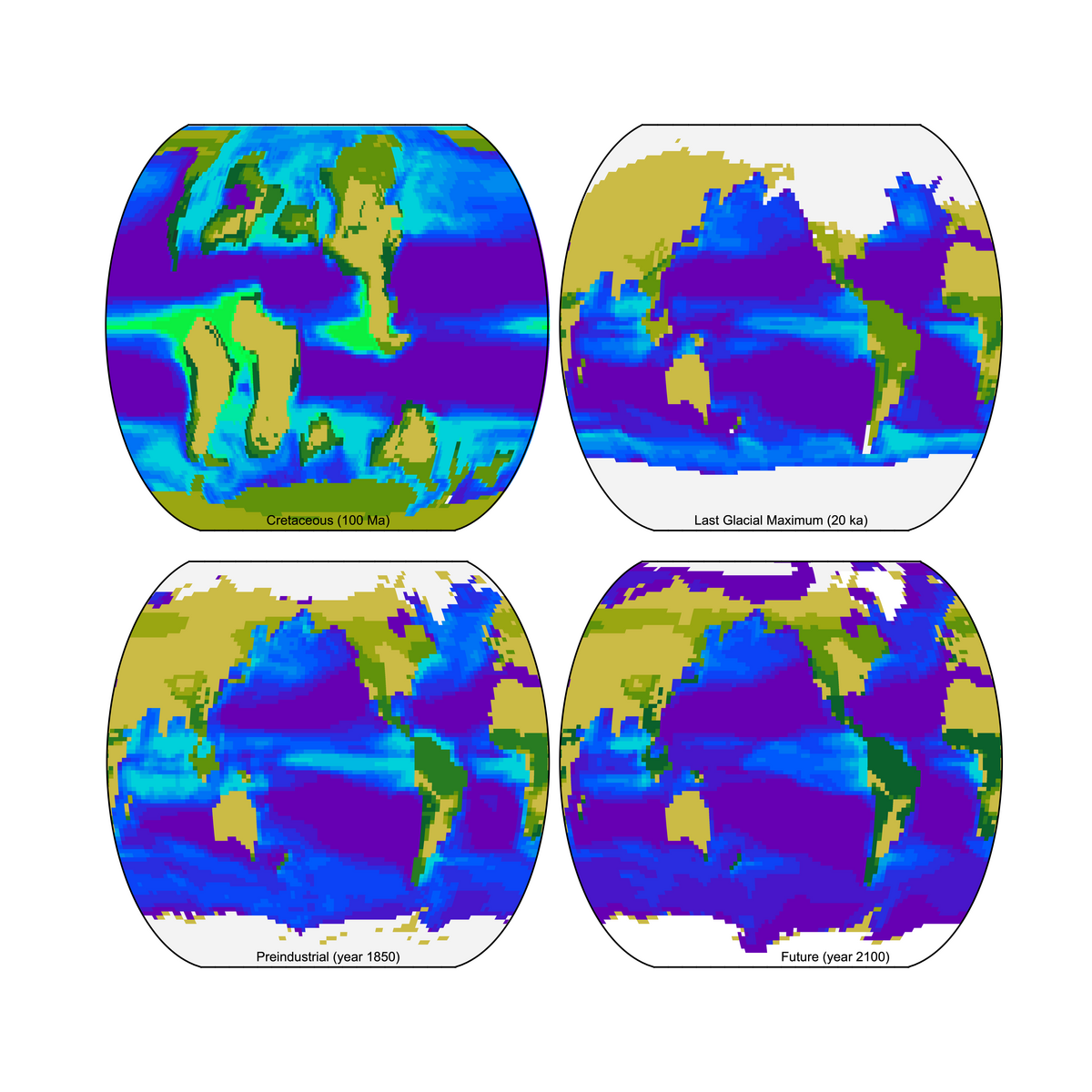Climates of the past provide unique views into how the environment and the processes that govern it operated under significantly different conditions compared to today. One of the main uncertainties in marine biogeochemical models is the sensitivity to transient climate change which is difficult to constrain with the available observations. The main aims of our group is to quantify the response, controls, and feedbacks of marine biogeochemical processes in a changing climate system. This provides us with additional independent information and better constraints on marine biogeochemical, climate, and Earth System models which improves the reliability of their future climate scenario projections.
Contributors:
- Christopher Somes uses an isotope-enabled Model of Ocean Biogeochemistry and Isotopes (MOBI) within an Earth System Model of intermediate complexity (UVic) to compare directly to sedimentary records (e.g. δ15N and δ13C) to constrain marine biogeochemical processes in the past (e.g. marine nitrogen and iron budgets/inventories and their impact on biological carbon pump, (de)oxygenation). This has been applied during the Last Glacial Maximum (21,000 years ago) and future applications will focus on the last deglaciation (~21,000 to ~12,000 years ago) and Cretaceous Ocean Anoxic Events (~90 million years ago).
- Chia-Te Chien uses an optimality-based ecosystem model (OPEM) within the UVic-ESCM to understand effects of variable phytoplankton stoichiometry (C:N:P) on the LGM biogeochemistry. He is particularly interested in the dependence between the iron supply, export production, oxygen level, and nitrogen cycle. (affiliated)



